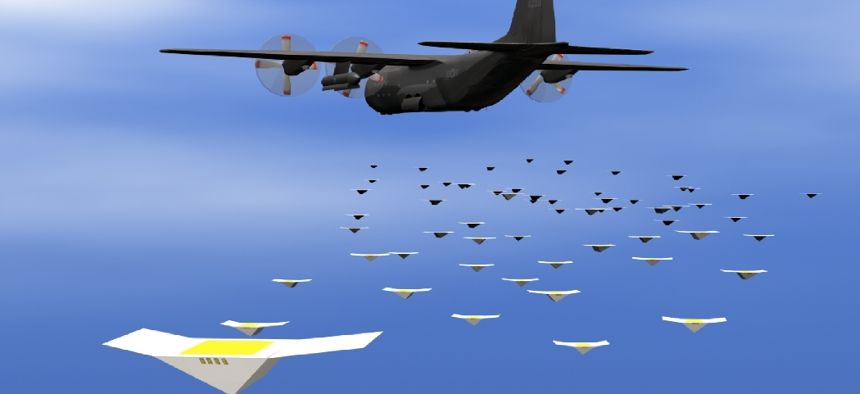Army seeks swarms of mini-drones for medevac
Research solicitation envisions swarms of semi-autonomous minidrones to conduct medevac missions.
There are two hot concepts in unmanned vehicles: Swarms of drones operating as a coordinated pack, and robots evacuating casualties.
Put them together, and you have an Army idea for teams of robots evacuating battlefield casualties.
A single robot can't do all the tasks required for medevac, according to the Army Medical Research and Materiel Command research solicitation.
However, Army acquisition officials maintain that a group of coordinated small mobile robots could team up to collaboratively perform the required tasks of locating, assessing and extracting a casualty, with a human in the loop for supervision and high-level commands.
The Army is looking to develop a casualty extraction capability using unmanned air or ground vehicles, perhaps equipped with manipulators or grippers, that could assemble into team as necessary. Yet the Army doesn't want a new type of robot.
"The intent is to develop the software to enable a secondary use for existing or emerging small multi-purpose Unmanned Ground Vehicles (UGVs), and/or Unmanned Aerial Systems (UAS) to self-assemble to perform the cognitive and physical tasks required to extract a wounded casualty to a safe location where a combat medic can perform stabilizing care and initiate further evacuation," the solicitation states.
As examples of existing robots that could be used, the Army mentions the Advanced Explosive Ordinance Disposal Robotics System, the Man-Transportable Robotics System Increment 2, and the Common Robotic System – Individual. The technology wish list includes giving the robots significant autonomy, and an open architecture to allow integration of future drones.
Phase I of the project involves devising a concept that will allow robots to identify and locate casualties, navigate to their location, self-assemble into a team, secure a casualty to a standard litter, and transport the injured individual to a safe location. This must be done semi-autonomously under the direction of a single human operator.
Phase II will involve a demonstration using at least two mobile robots. The system "should demonstrate robustness to different types of terrain, varying casualty poses, and variation in soldier height and body-type," the Army requests.




